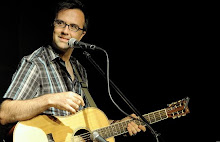I had a Danelectro
The baritone guitar is six stringed, tuned halfway between a guitar and a bass, B E A D F# B (low to high). That's a scary looking tuning (especially the F#!) but it's just standard guitar tuning down a perfect fourth. But it's the tuning, in a kind of liminal space between guitar and bass ranges, that defines the baritone. It's really the only way, short of adding two strings, to be able to passably represent guitar and bass at the same time on the fly. The "on the fly" part is important, because retaining the six-string design keeps things simple and keeps neck widths down. If I was on a pickup acoustic gig, I wanted to be able to move around the neck easily, since I was probably transposing the chords of the song in my head at the same time.
At the time, I was playing with the Kevin MacLean Band around Hamilton. Kevin was just starting to expand beyond performing as a single and booking small band dates. For cramped pubs we could play as a trio, with the drummer on stand-up cocktail kit and myself on baritone guitar. With Kevin's acoustic guitar filling in the harmony, I covered bass lines and could throw in credible sounding solos. It was a easy, low-tech way for a three-piece to sound like a four-piece.
I can see this idea working for acoustic pub bands, though I haven't seen, through the recent boomlet of baritone guitar interest, anyone playing one live. Maybe that's because I've ignored recent metal, where the "nu metal" downtuning of Korn and Deftones has led to a resurgence of black, pointy baritone guitars. It stands to reason that nothing assaults the colon like subsonic power chords. Another contemporary take on the baritone idea is the acoustic baritone guitar. Vicki Genfan and Al Petteway sound wonderful on it, which suggests to me that the acoustic baritone has all kinds of possibilities as a solo fingerstyle instrument.
All of the above was inspired by a post over at Guitarz on baritone Telecasters, an idea whose time has come. Now I see from my reading that Duane Eddy used a baritone guitar. When I was a really small child I loved my mother's record of Twangy Guitar and Silky Strings.













There's a great youtube video of brian Setzer on a Gretsch Longhorn, tuned C to C playing Mystery Train. Worth the look....
ReplyDelete